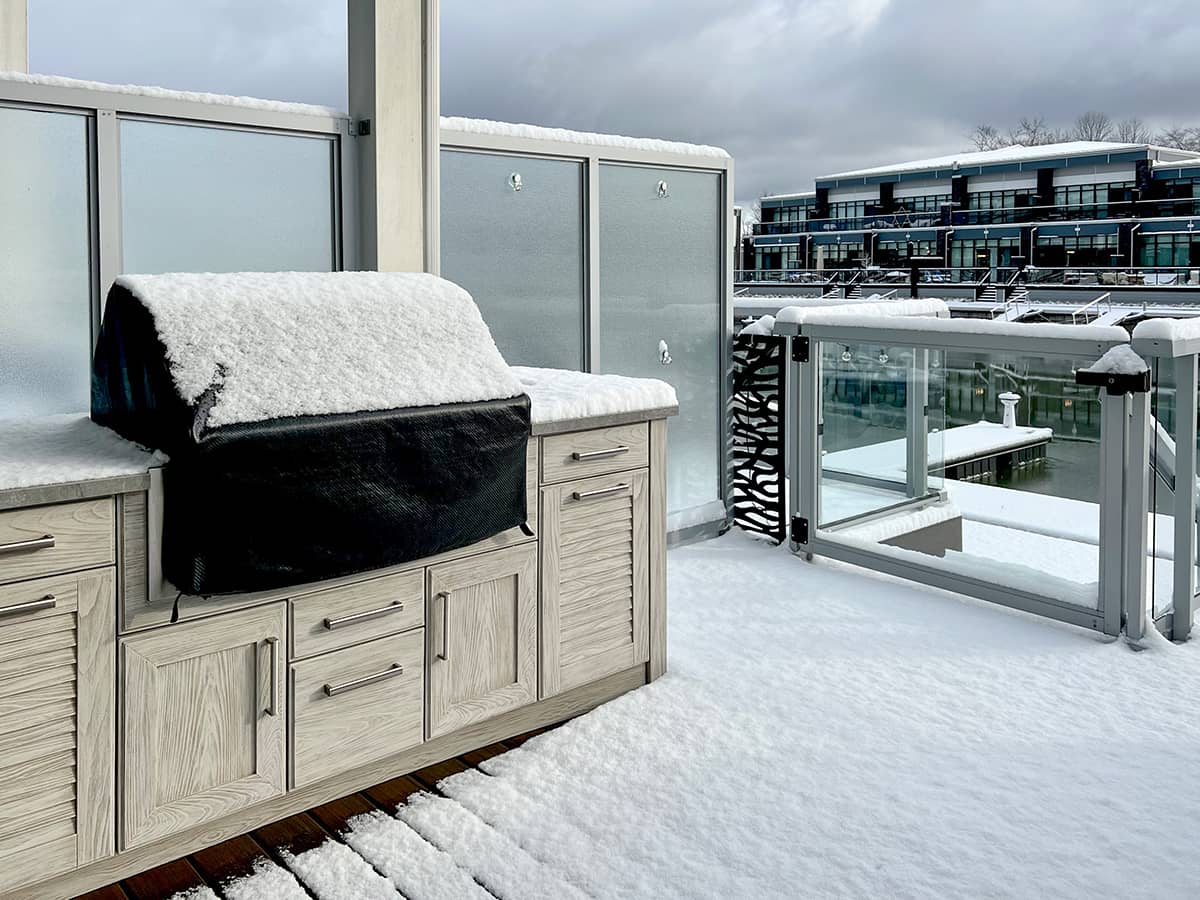
One of the things some Canadians most look forward to in the spring is firing up their slumbering grill for the first time since the fall.
For many Canadians, however, barbecue season doesn’t stop when the snow starts falling – it’s all year long.
A Weber survey found that 43% of Canadians grill year-round. An older Ipsos-Reid poll produced similar results, finding that 39% of us partake in winter grilling.
The appeal of enjoying flame-cooked food that is fresh off the grill is strong. It must be to get anyone to abandon the stove in their perfectly warm house and go stand in front of a grill when it’s -20 degrees and there’s a foot of snow on the ground!
Barbecue year-round with these winter grilling tips
As cold as our winters can be, we’re surprised more Canadians don’t treat themselves during the season to the taste of delicious grilled food that doesn’t come in take-out containers.
There is simply no substitute for the taste of hot-off-the-grill, home-cooked food. And for some of us, a meal grilled in the winter tastes that much nicer knowing it required a little more work and perseverance to get the job done.
It doesn’t require too much more of an effort to use the grill during inclement weather, however. Try these winter grilling tips to satisfy your appetite for freshly grilled food, even when the weather won’t cooperate.
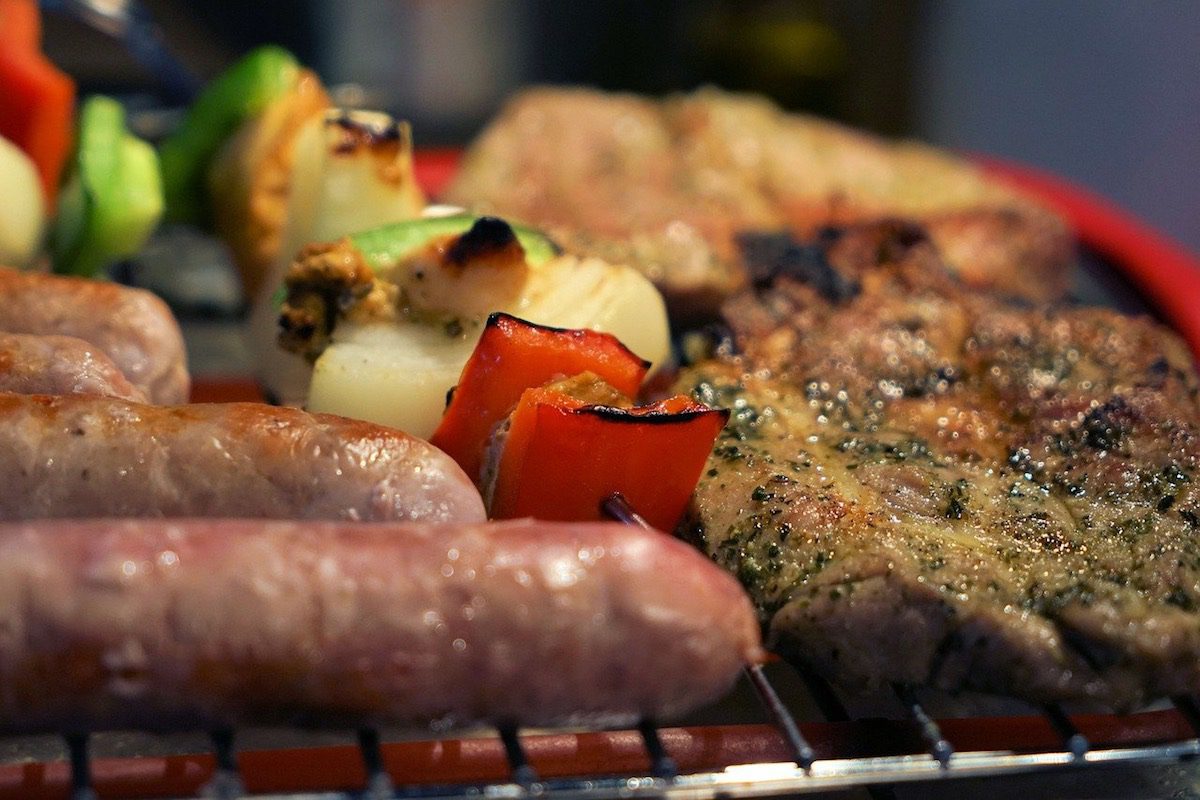
1. Dress for warmth and practicality
Canadians don’t need a reminder to bundle up when they’re going out into the frigid winter weather.
Along with dressing in layers, covering your head, and wearing the rest of your winter attire, there are a few other things to consider when you’re cold-weather grilling.
If you’re wearing a scarf, ensure it’s tied around your neck and not dangling, which could become a fire hazard. Also, don’t use thick winter gloves that make it harder to work the grill and carry things. Get some heat-resistant grilling gloves that are lightweight and designed for warmth.
Because you’ll be going in and out of the house a few times to do your cooking, try to choose a jacket and footwear that are easy to put on and take off.
A hot, grilled meal is reward enough for your efforts. And if you need any additional motivation to fire up the grill when it’s freezing outside, remember this: at least there isn’t a single annoying bug to contend with!
2. Keep the grill close
Having a barbecue that is easily accessible is an important part of winter grilling. Remember, the closer a grill is to the indoors, the more inclined you’ll be to use it in the winter.
Ideally, you want the appliance to be located as close to the house as possible so you don’t have to break out the snow shovel to get to it. Not too close, though – always keep a grill at least 10 feet from your house and any wooden fixtures.
Having some type of overhead covering is also recommended for year-round grill use. When it’s warm, a covering will protect you from the rain and hot sun, as well as give you more privacy. And in the winter, a grill that is located in a covered, more controlled environment will be much easier to use. Being exposed to less moisture will extend the life of the grill as well.
If your built-in grill or movable grill can’t be located closer to the house and does require some snow shovelling to get to, keep a couple of things in mind:
- be careful using a metal snow shovel around your grill so you don’t dent it (a plastic shovel is safer to use)
- sand, salt, and ice melting products will damage patio and pathway stones, wood and composite decks, and grills
Be sure to move grills with wheels before the snow starts falling. And never use any type of grill in the garage during bad weather, even with the doors open. It’s a fire and carbon monoxide hazard.
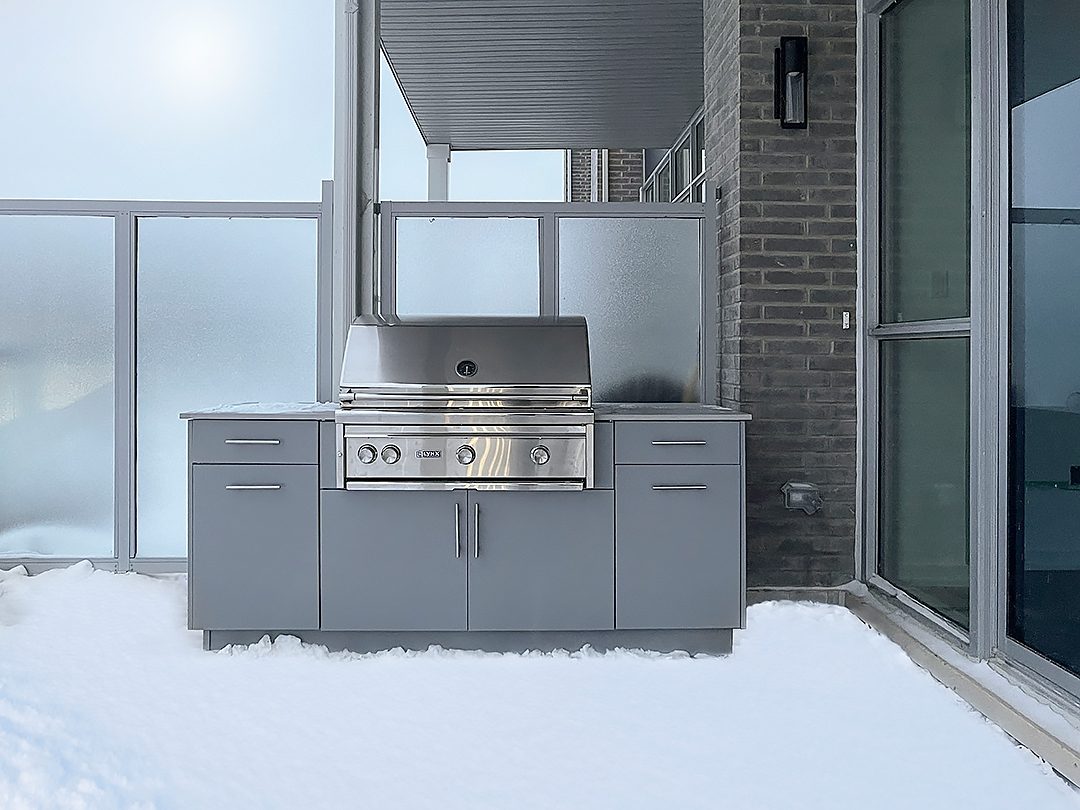
Keep your grill located as close to your house as possible to avoid having to get out the snow shovel to access it.
3. Have sufficient outdoor lighting
The short days and long nights of winter will make good lighting around your outdoor cooking space essential.
Having sufficient lighting for your winter grilling tasks makes it safer to navigate around the backyard and to get a good look at how the food you’re cooking is progressing. You don’t want to tie up one of your free hands with a flashlight or your phone with its flashlight turned on.
If your backyard lighting isn’t up to snuff, buy an all-weather lamp or install a permanently mounted light fixture by the grill. Even a small clamp or clip-on grilling light will help while cooking.
Some premium grills come with useful features like under-the-lid lighting and backlit knobs that are very useful for cooking after dark.
4. Use a good grill
Speaking of premium grills, let’s get into why they’re worth the investment, especially for winter cooking.
A grill’s cooking efficiency is even more important when it’s cold outside and getting your food cooked just right is more of a challenge.
Premium grills cook your food more evenly and have useful features like zone heating that allows for variable cooking temperatures on your grill surface. A feature like this is quite handy when two or three different types of food need to cook at different temperatures.
High-quality grills function more reliably as well. They’ll start when they should, provide accurate temperature readings, and are made with better parts and materials than cheap grills. Inexpensive grills are constructed with low-quality metals that rust faster and don’t retain heat as well as premium grills, which increases the amount of time it takes to heat up the appliance and do your cooking.
You’ll appreciate all of these premium grill benefits because you can get your cooking work done faster so you can get back inside to the warmth of your home and start dining.
5. Grill “smarter”
Another benefit of cooking with a luxury grill is the smart features some of them offer. Models like the built-in Lynx Professional Smart Grill deliver a 21st-century outdoor cooking experience with high-tech features such as:
- the MyChef™ automated cooking system that cooks at precise temperatures for the optimal amount of time
- responsive grill controls that can be activated with voice commands or a smart device
- alerts sent to your smart device informing you that the grill is heated up to the desired temperature, that it’s time to flip your food, and when your food is done cooking
If your grill lacks any smart features, get a smart meat thermometer. These great, inexpensive devices involve inserting a probe into the meat on a grill so the internal temperature can be monitored. The cooking progress is monitored via a smartphone app that alerts you when the temperature is higher or lower than needed.
Making use of this smart grill tech gets you closer to producing perfect cooking results every time. You’ll also have to spend a little less time out in the cold keeping an eye on your grill.
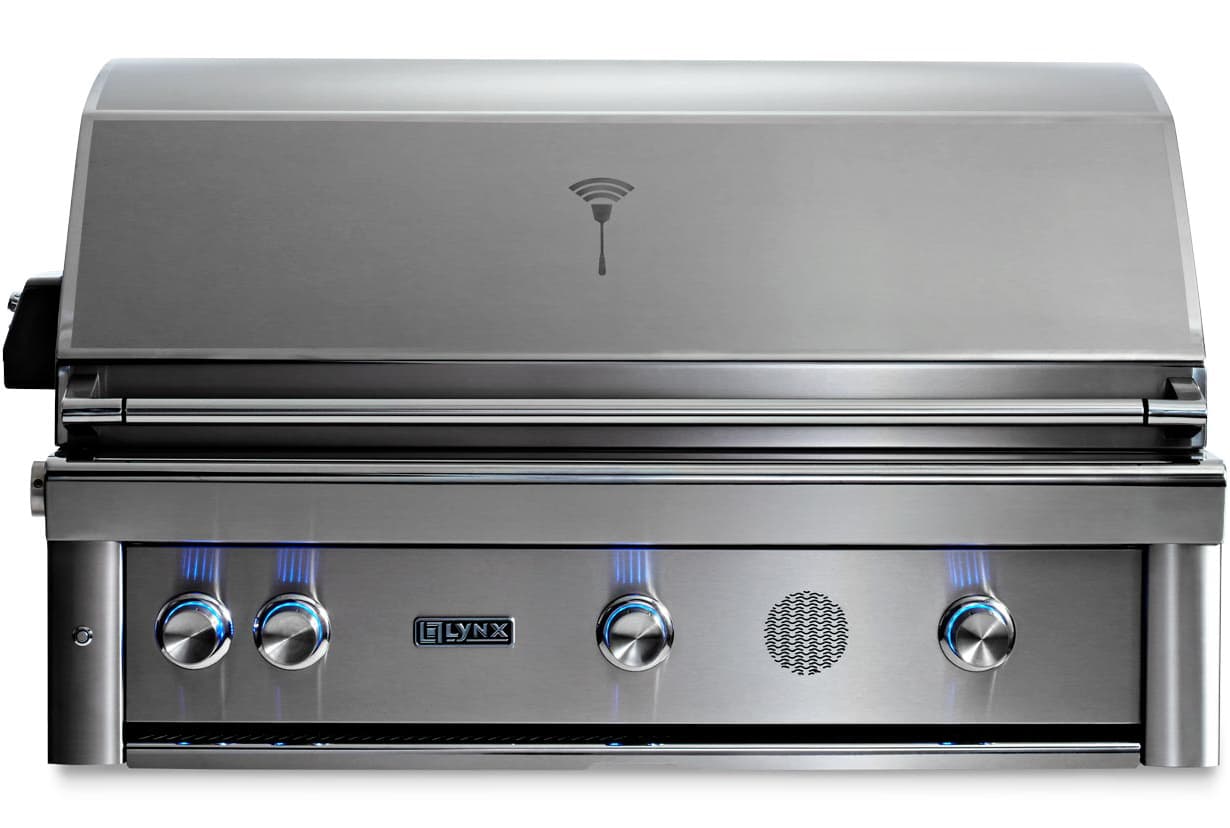
Smart grills have handy high-tech features that let you spend less time in front of the grill in winter and more time in your warm house while cooking.
6. Adjust your grilling routine for the winter
Your regular summer grilling routine will need a few adjustments for the wintertime. Let’s start with heating up the appliance. Factor in some extra time to get the grill heated up to the cooking temperature you want.
Even when it’s hot outside, opening the grill lid too much will add to your cooking time. Needless to say, it’s even more important to keep the grill cover closed as much as possible in the winter so less heat will be lost.
Remember that a grill will use more propane or natural gas in the winter as it works harder to retain heat and take longer to heat up. If you have a propane grill, plan accordingly and have an extra tank on hand (which is a good idea no matter what time of the year it is).
Now let’s talk about some good winter grilling practices for handling your food. Don’t move your uncooked food outside until it’s ready to go on the grill. When the food is done cooking, put it into a heated container (preferably a type that retains heat more effectively like ceramic) and get it inside pronto. You don’t want to create any extra work by having to reheat the food.
Any grill is easier to clean when it’s still warm or hot. Once your cooked food is moved inside, scrape off your grates before they cool off and things like meat residue, grease, marinade, and barbecue sauce harden.
7. Leave the new grilling recipes for the summer
Sub-freezing weather is not the time to be experimenting with complicated new grilling recipes.
Keep the menu simple with grilling staples like steak, sausage, burgers, chicken, hot dogs, and vegetables that can be cooked in aluminum foil or a pan.
Sticking with what you know and choosing fast cooking, low-maintenance foods will help you keep the grill lid closed more and lessen your time spent outside.
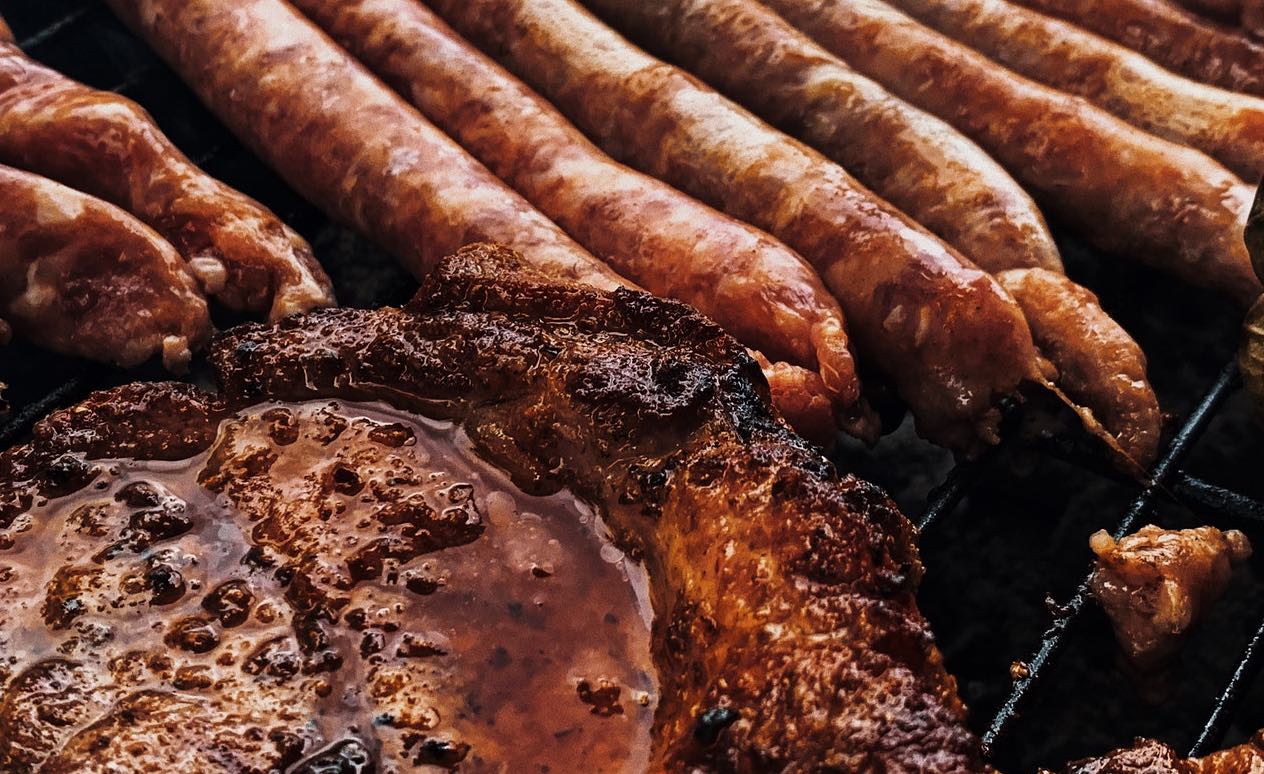
Keep your winter grilling menu simple and leave the new recipes for warmer weather.
8. Prep for your winter grilling in the fall
The fall is the best time to give grills a thorough cleaning after their heaviest period of use during the spring and summer. Taking the time to do some grill maintenance is much more important if you plan to do some winter grilling.
Grills that aren’t cleaned often enough will build up bacteria from the leftover grease and food remnants.
Disassemble as many parts as possible to make cleaning easier, including the grill grates, warming racks, and rotisserie rod. Leave the drip trays in place until you’re done cleaning the grill interior. Let the removed parts soak in warm water and some dish detergent for a short period to loosen some of the caked-on grill gunk.
In the meantime, give the grill interior a good scrubbing with some warm water, dish detergent, and a grill brush. Make sure the flavourizer bars and burners are properly cleaned off.
Use a degreaser or grill cleaning product and a brush or scrubbing tool to clean each part that was removed. Rinse and dry them off before putting them back in the grill.
Look for a product specifically meant for use on a grill exterior to clean it and protect its finish. Finally, lightly apply a coating of vegetable, peanut, or canola oil on your cast-iron grates and run the grill on high for 30 minutes. Seasoning grill grates helps prevent them from rusting and food from sticking to them.
9. Cover up
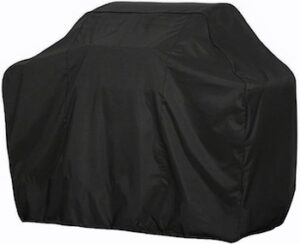 By the time your meal has been eaten, the grill will have cooled off enough to be covered. Spending just a few seconds to cover a grill every time after using it will protect it from corrosion and prolong its life.
By the time your meal has been eaten, the grill will have cooled off enough to be covered. Spending just a few seconds to cover a grill every time after using it will protect it from corrosion and prolong its life.
Covering the grill also makes it easier to get started the next time you’re ready to cook outdoors again.
The inside of the cover must be dry before putting it over a grill. If the interior of the cover is damp, the moisture can get trapped and cause the grill to rust quicker.
If your grill needs a replacement cover, spend a little more on a high-quality cover that is made with a durable material that won’t fade and has vents with good airflow to let out moisture. Also, be sure that the cover fits your grill snugly.
With the right approach, it’s always grilling season!
Follow these winter grilling tips and you can enjoy the benefits of using your barbecue at any time of the year.
Let Outeriors help get your backyard ready for winter grilling use and a lot more functionality when the weather warms up.
Our outdoor kitchen and living space designs will maximize your family’s enjoyment of your backyard. The high-quality products we use are built to withstand the Canadian winter (and look great while doing so).
Start a dialogue with Outeriors about getting your outdoor kitchen project rolling by scheduling a free design consultation with us.
Please share this post if you found it useful.
